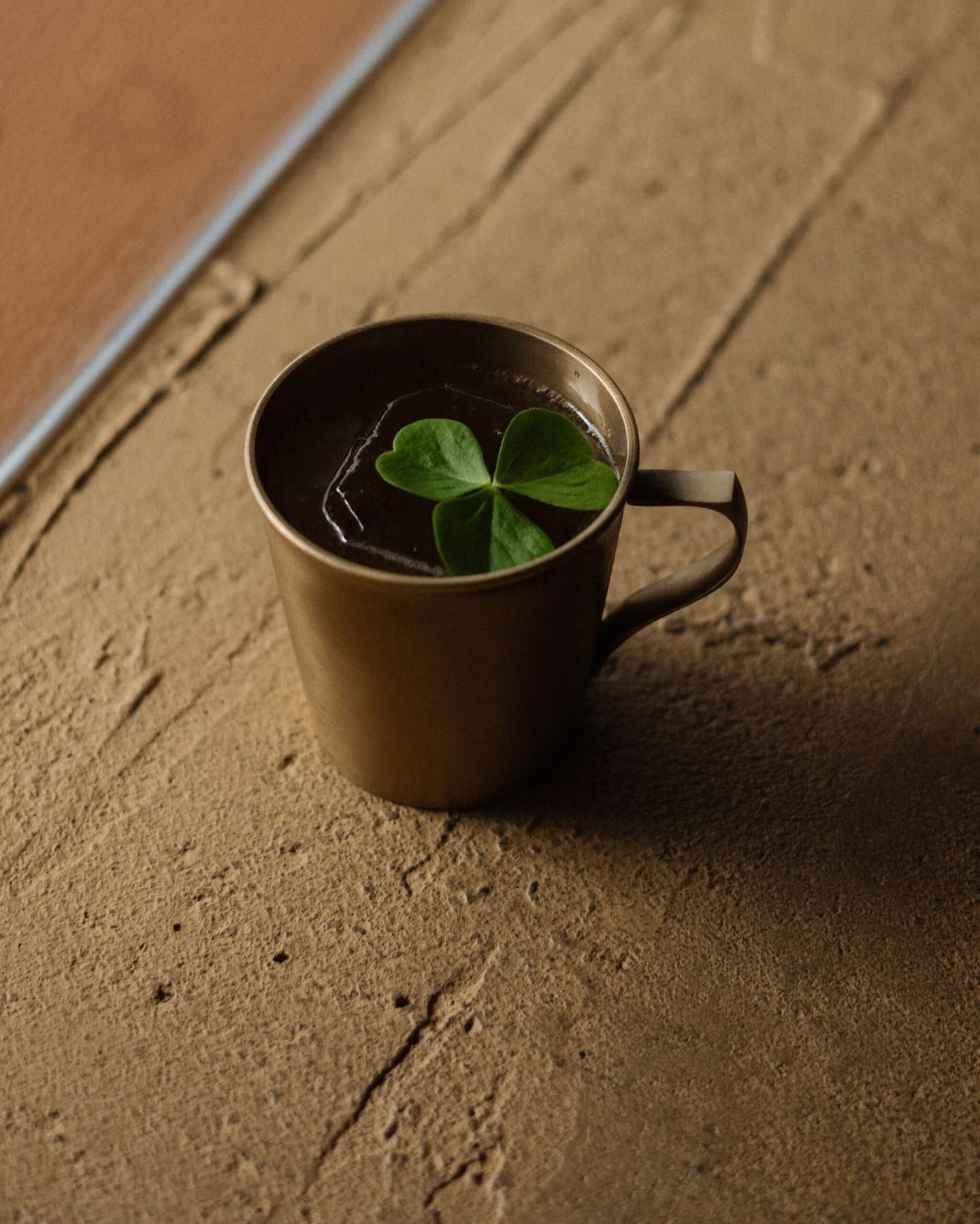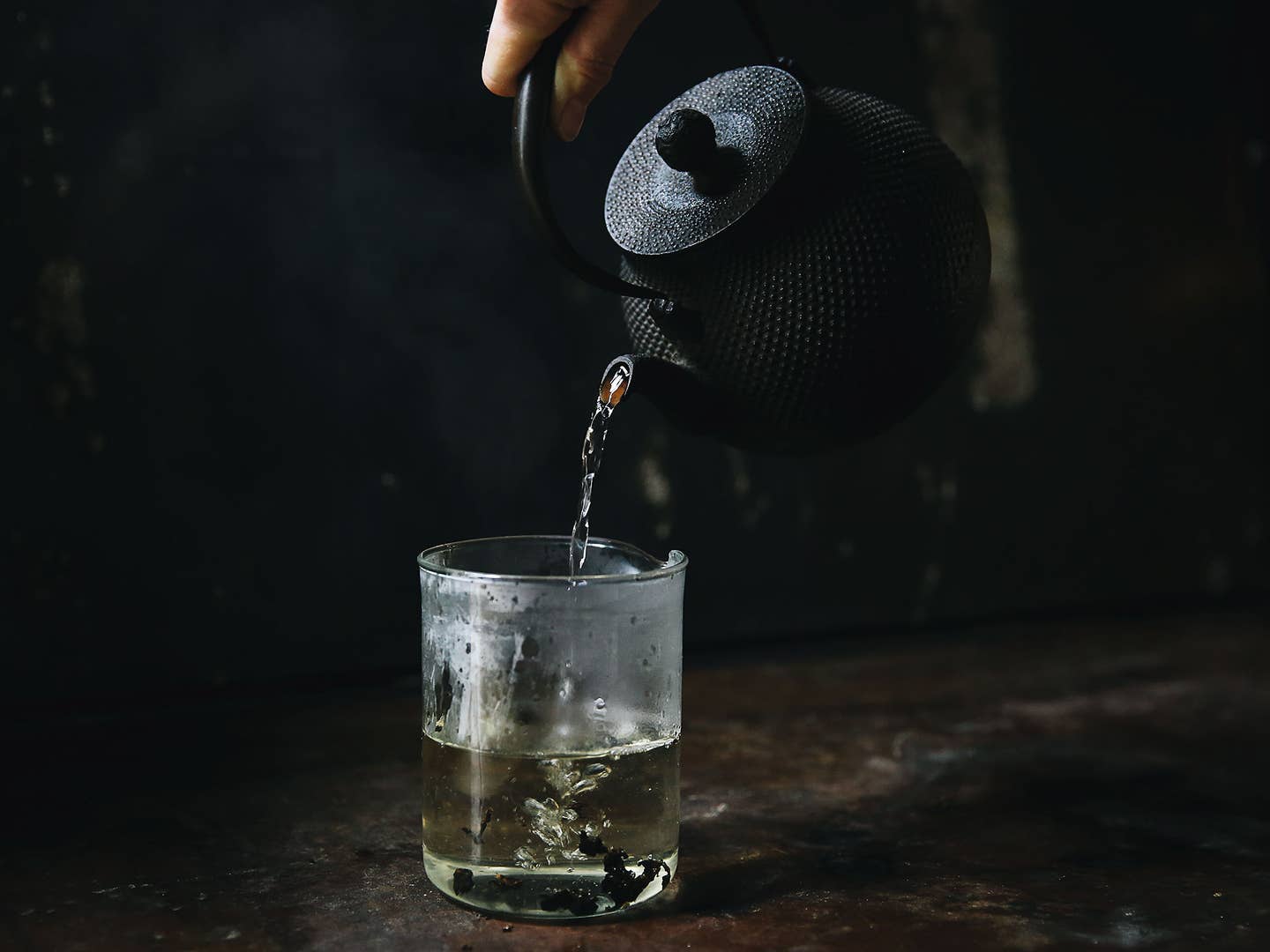
My Cast Iron Tea Kettle is a Heavy, Rusty Pain in the Ass, and I Love It
The art and pleasure of a watched pot’s slow boil
Never put cold water in a hot, empty tetsubin. Or heat it too quickly. Or use it on a gas stove. Or fill it up all the way. Or keep water inside for too long, lest it rust. It will rust anyway, because iron + water = rust no matter what, but don't let it rust too much.
Tetsubins—cast iron Japanese tea kettles—have rules. And truthfully—in our current appliance golden age, where elegantly goosenecked electric kettles with clear digital readouts simmer water to any temperature you desire down to the degree—there aren’t many reasons to put up with a tetsubin at all. Why deal with the analog labors of a stovetop kettle made solely for boiling water for tea or coffee, let alone one as finicky as a tetsubin?
Because some people only listen to music on vinyl. And then there are tetsubin people.
Ask a certain species of embarrassingly obsessive tea nerd about tetsubins and they'll tell you this: A naked iron kettle mineralizes and softens the water you boil in it, which makes for a noticeably richer, sweeter brew with less bitterness, greater depth, and smoother character. It's one of those little things you can do to enhance your drinking experience, like using special glassware for specific wines or nailing the perfect beer pour.
Is it necessary? Not at all. Game-changing for the best tea ever? I wish—it'd make for a far more clicky article—but nope. Yet if you're the kind of dork who stays up late poking around 90s-era websites for information on single-bush dancong oolong (or you love such a person and have not yet sent them to rehab), a tetsubin is at once a valuable tool and an art object of desire. It's also a material good that does what most material goods don't: grant an appreciation for the intangible beauty of why we pursue such obsessions in the first place.
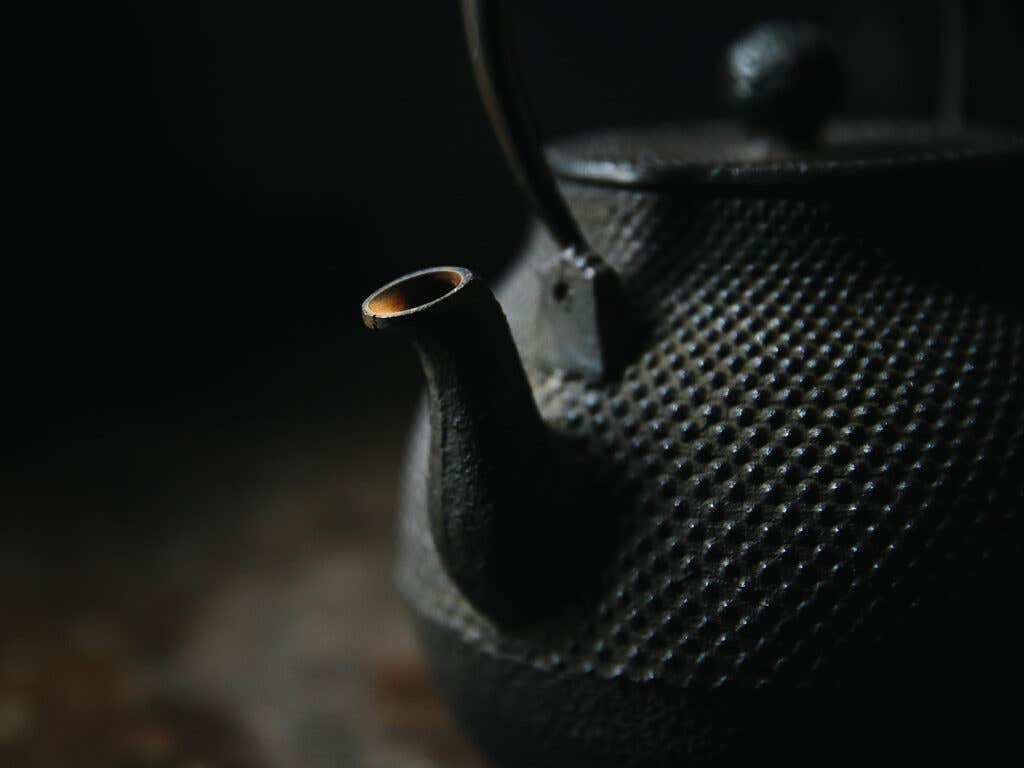
Some drinkers swear by tetsubins to the point of refusing to boil water in anything else, except under the most dire circumstances. Others opt for the water-brightening effects of pure silver kettles, which can be yours for a mere 800 to several thousand dollars. By comparison, tetsubins are a bargain; you can buy vintage models of arcane origins on eBay for anywhere from $50 to $250, or order a brand new one, if you're willing to join a one- to two-year waiting list for the work of a dedicated shokunin. (Pay no mind to teapots like this, which look like tetsubins but are actually designed to brew tea, not boil water. These pots are lined with enamel on the inside, which neutralizes the water-softening effect you're going for, and are unsafe for boiling water on the stove. They're also not great for making tea, while we're at it.)
Quality tetsubins are hard to find in the States, so when I saw a bumpily handsome one hiding in a corner at Bonnie Slotnick Cookbooks in New York for all of $35, I pounced. Sure, it smelled like old books inside and had plenty of rust and the bottom was scratched in places, but cast iron is nothing if not resilient. As long as a tetsubin doesn't leak and isn't pitted to hell, you can salvage it.
A damp, coarse sponge and some elbow grease will clear away most offending rust and other gunk. I continued the restoration process by boiling a pinch of rice in a kettleful of water for an hour every day for a week, then repeated the process with green tea leaves instead, then spent a third week boiling and dumping fresh water. The rice releases starch that soaks up and neutralizes offending flavors and aromas, while compounds in green tea help clear away the coat of rust. Once the interior looks more or less clean, just boil batches of fresh water in it until the brew that pours out is colorless, odorless, and faintly sweet, round, and minerally.
Finally, three weeks after purchasing and cleaning the thing and asking for advice from every tetsubin user I could find, I was ready to brew some tea. As long as I followed the rules.
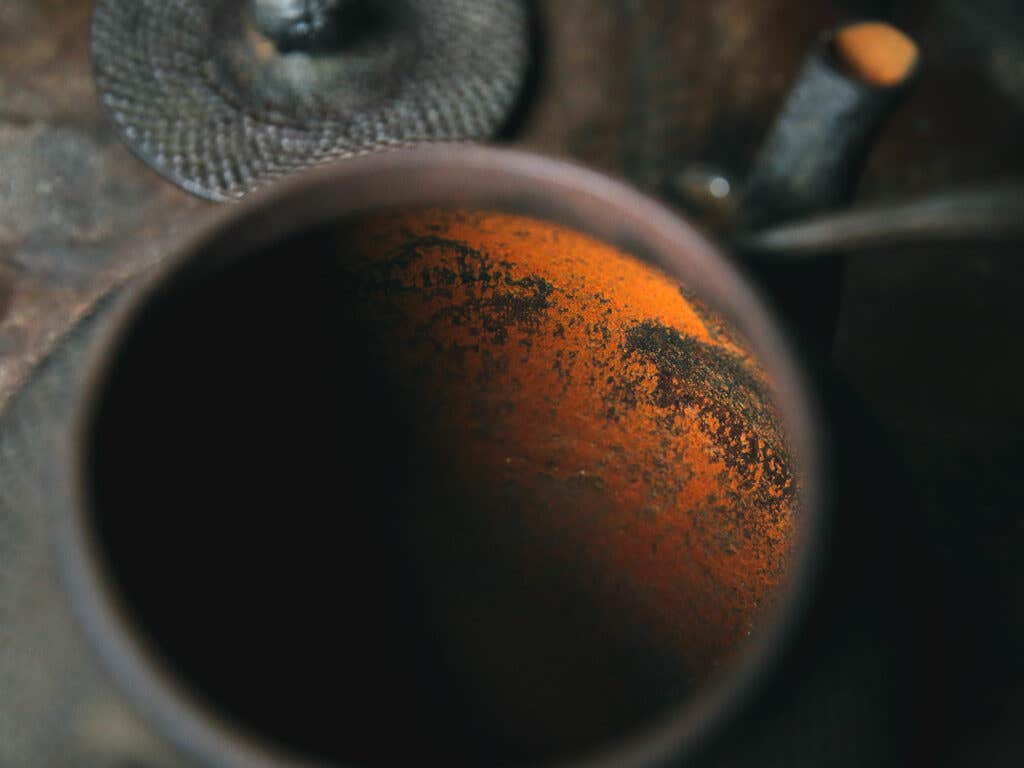
Cast iron users of all kinds freak out about how to treat their precious babies, and that goes double for those who've paid serious coin for an intricately designed antique tetsubin, which sure, is made out of a baby's worth of iron, but that iron is fairly brittle.
So you don't want to get it rocking hot while empty, then dump in some cold water, lest the instant contraction of the metal cause any warping, stretching, or cracking, all of which can lead to stress fractures. If you're boiling multiple batches of water, you'll need to leave some amount of hot water in the kettle before adding more. If you're settling in for a long session of brewing and drinking tea—left to my own devices, mine can stretch for hours—this means a lot of sitting and waiting for water to slowly return to a boil, then nudging the heat back down to keep it from bubbling violently once it hits temperature, and fidgeting with the lid to see when it's time to add more water. Oh, and one of the byproducts of the gas used for most stoves is water vapor, which can cause pitting on the bottom of the kettle over time, and some tetsubin folks warn against induction cooktops leading to eventual cracking in the iron, so you better have an electric or infrared cooking surface to use, or a solid heat diffuser that can stand prolonged flame.
The rhythm took me a few days. But now I have it down, and the gentle burbling sound of a half-full tetsubin by my desk on its hot plate is as comforting as a snoring dog curled up at my feet. The iron radiates a gentle warmth, the well shaped spout releases a precise pour, and the whole thing is just a pleasure to handle.
It also makes lovely tea. My roasty tieguanyin brews with more verve from tetsubin water. Dark and earthy pu-erh is sweeter and less astringent, with a resounding finish that lingers in my throat. Even my delicate green teas get a thicker, more buttery textural boost.
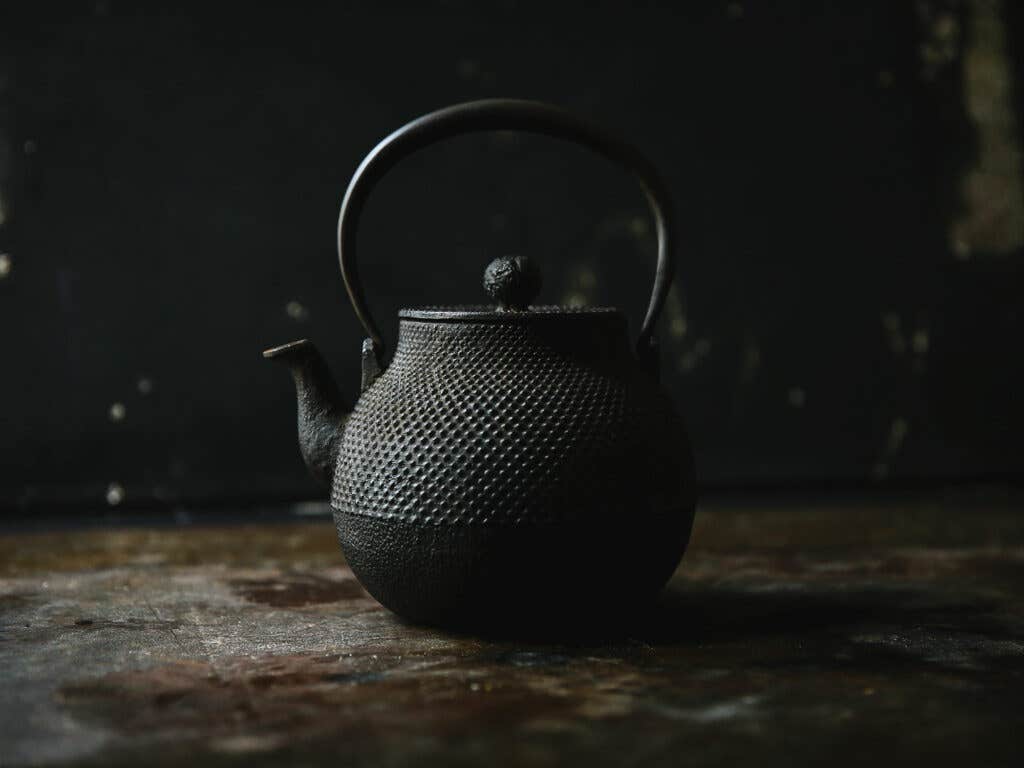
But we all know how this goes. Purported Expert makes Abstruse Claim about the Nuanced Greatness of Some Expensive Thing, only for Scientific Evidence to bite said Expert in the ass. Time and again, wine enthusiasts and laypeople have been duped into thinking cheap wine costs a fortune and vice versa. It's not even clear if people can tell red and white wine apart if they drink with their eyes closed. Inevitably the Flustered Expert gives a complicated reason why their palate is an exception to this reductionist hogwash. The cycle goes on, and we're all fools for playing. Pass the Lipton.
I was curious how much my own confirmation basis and cognitive dissonance was impacting my taste, so I did some entirely unscientific testing on laypeople of my own. I boiled two pots of water, one in a tetsubin, the other in my trusty stainless steel electric kettle, and had them taste samples blind. Then I did the same but with actual brewed tea.
Rigorous research this wasn’t, but the comments were encouraging; most took an instant liking to tea made with tetsubin water, even going so far as to describe it was sweeter, fuller, and pleasantly ferrous. Which isn’t to say a good kettle will save bad tea or anything drastic, but enough to convince me it’s not all in my head.
I've been raising my tetsubin for a couple months now, and it's become a comforting part of my nightly routine. I get home, have dinner, pick the night's tea, and set the kettle on the hot plate. With a push-button electric kettle, making tea's an easy, automatic process, but when you're brewing with a tetsubin, every step demands far more patience and intention. And attention, which makes the process that much more captivating. I find myself pausing the queued episode of SVU between sips to consider what I'm tasting. As I wait for the kettle to reboil, I have time to appreciate how long and nicely the tea lingers in my throat. I sit there a few minutes, breathing out and tasting the air.
Keep Reading
Continue to Next Story









